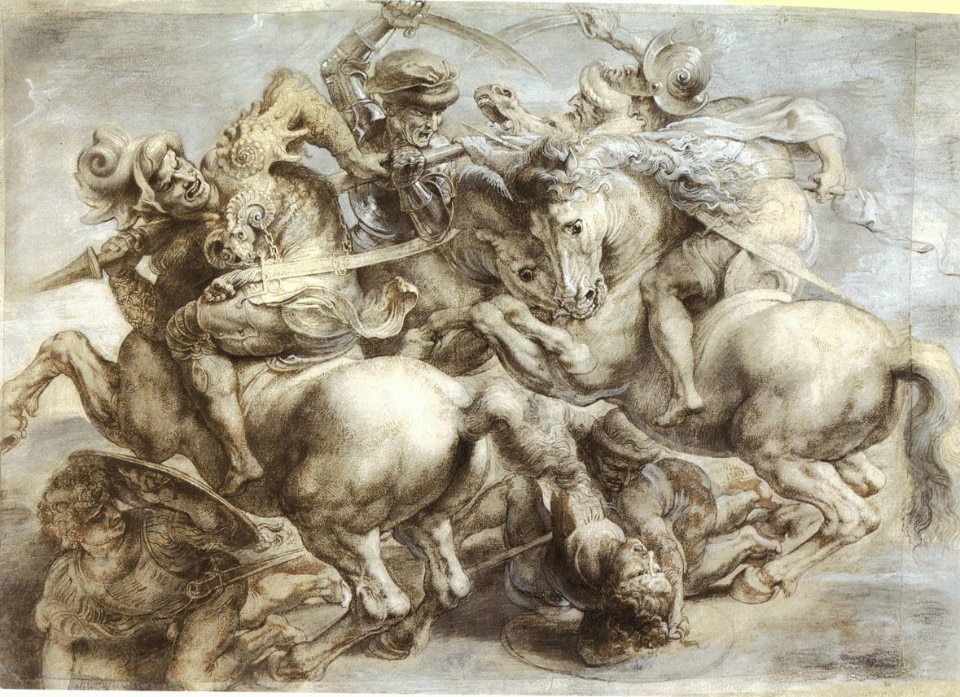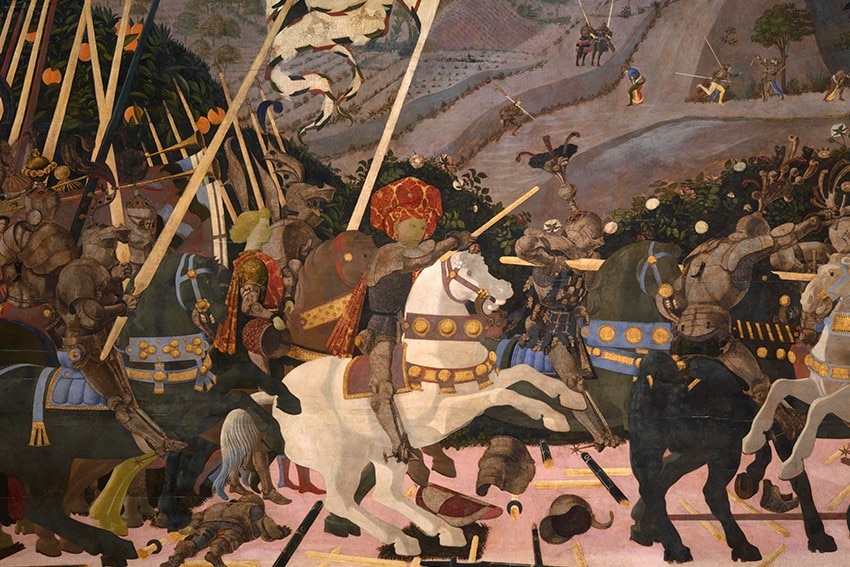“There is the whole history of mankind and nature in the figure of the horse and the rider,” said the Italian painter and sculptor Marino Marini. Battles, discoveries, conquests, journeys. Kings, leaders, and conquerors would not have gone far without horses – these central figures in the history of mankind inevitably lead us to think about their role in wars and battles, now replaced by horrible and dangerous tanks or armoured bulldozers.
Paolo di Dono, better known as Paolo Uccello, painted a series of three works in 1438 (circa), all on the theme of battle: The Battle of San Romano. Florentines and Sienese are fighting. In an irreverent and sarcastic way, this timeless historical rivalry is still alive today. These two cities, somehow sisters, inevitably recall current events. The story unfolds in a triptych painted on wooden panels and tells three salient moments of the battle: Niccolò Mauruzi da Tolentino at the Battle of San Romano, Niccolò Mauruzi da Tolentino unseats Bernardino della Carda at the Battle of San Romano, and The Counterattack of Michelotto da Cotignola at the Battle of San Romano.
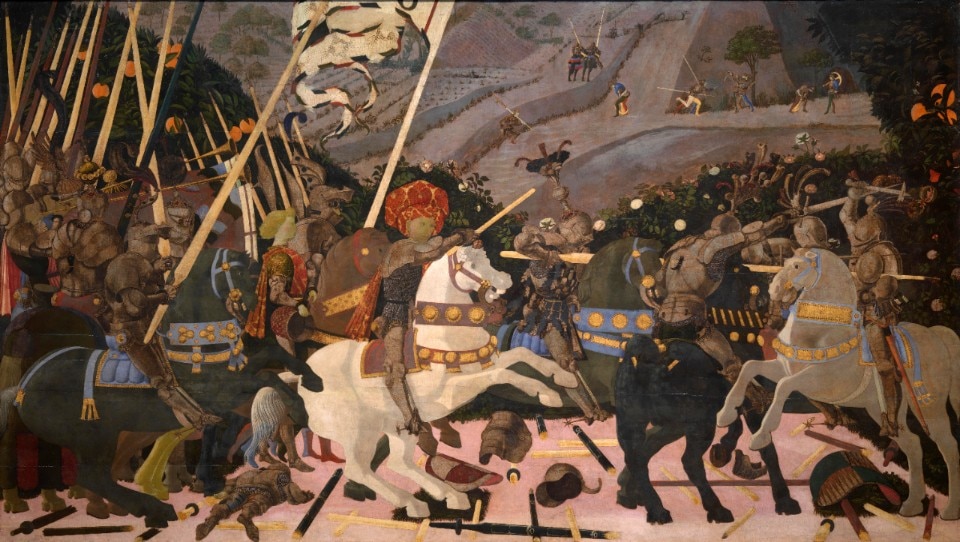
The best-known of the three paintings is the one on display at the National Gallery in London, where Niccolò da Tolentino is portrayed leading the cavalry. A white horse with precious harnesses in the centre of the scene immediately catches the viewer’s attention. Da Tolentino, who is riding the horse, is wearing a funny, precious hat, his face is bare, and his posture is straight and proud. Behind him, some trumpeters are accompanying the attack of the troop with their instruments. A formal simplification of lines, figures, shadows, and light was perfectly designed to give rhythm and sense to the work and serves as a testimony in which da Tolentino’s horse almost seems to be the subject of the work.
“The Florentines,” wrote Louis Godart, “identified themselves with the victorious Athena through prudent warfare”. The Belgian philologist and archaeologist makes an interesting point, however, by turning to another historical battle: The Battle of Anghiari.
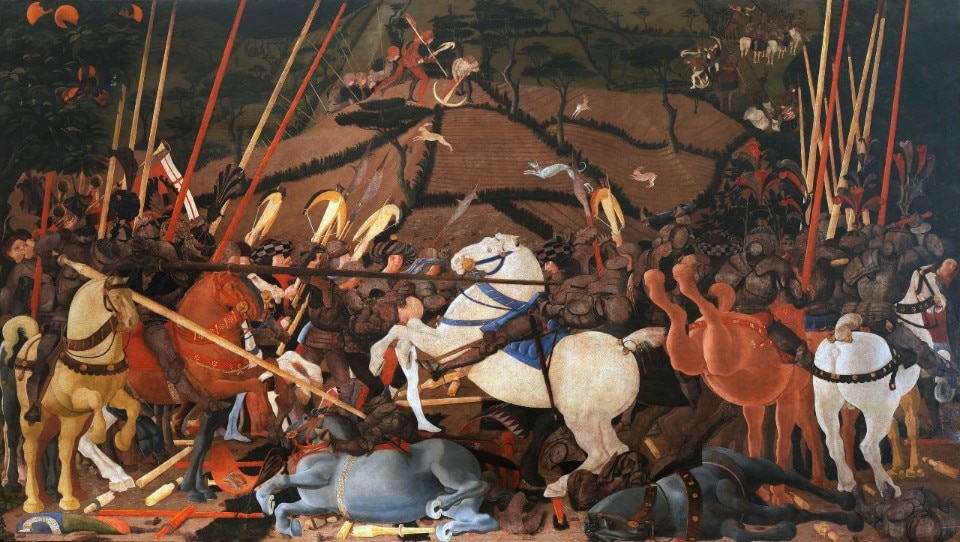
In art history, the best-known version of this battle is the one painted by Leonardo da Vinci and commissioned by the Republic of Florence in October 1503 for the Salone dei Cinquecento in the Palazzo Vecchio in Florence. It was probably never finished for reasons related to the great master’s chosen painting technique. Peter Paul Rubens reinterpreted the work almost faithfully, except for the style. The inspiration probably came from an anonymous copy or from preparatory drawings by the Tuscan master, also because at the time Vasari’s intervention had already been implemented.
The role of the horses was as prominent as that of their respective riders. Terrified expressions, convulsive scenes. A document of dissent against the war coming from the horses themselves.
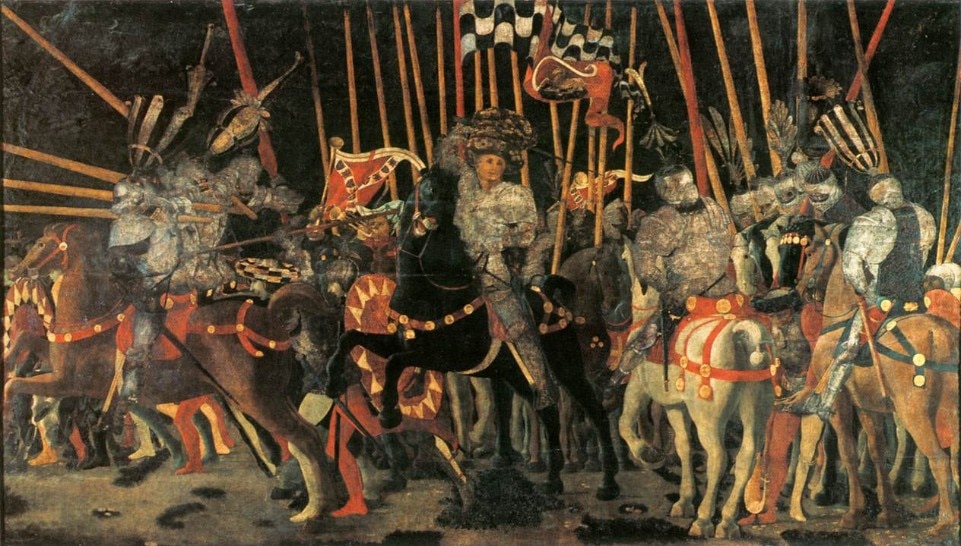
Luis Godart also wrote: “Leonardo has admirably rendered the state of mind of the animals participating in the battle. The eyes of the two horses forced by their riders to clash and annihilate each other look fearfully at the two men tearing each other apart. I have the impression that the master wanted to express all the aversion of these animals for the fight into which the men’s anger and madness dragged them”.
The horse has represented in history, and not only in the history of art, an element of great revolution. From the Trojan horse to the medieval steeds, when society was founded on them and their riders, to the futurist horses that were nothing but a symbol of a new contemporaneity and its dynamism, to the Palio di Siena, which still today attracts the curious and enthusiasts from all over the world, the horse has always represented a status symbol, a culture, not only battles but also bonds and passions.
